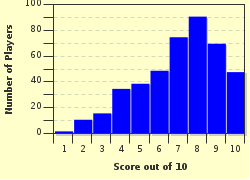Quiz Answer Key and Fun Facts
1. Rocket science has a 'proper' name too - what is it?
2. Although the maths involved in actual rocket science can be very complicated, the basic principles are stated in three equations called the Laws of Motion devised by a very famous scientist, way back in the 17th century.
Who is this scientist who wrote "Principia Mathematica"?
3. For a rocket to leave the gravitational pull of the Earth, it needs to reach a very special speed.
Once it reaches this speed, the gravity of the Earth can no longer pull it back, and it can "boldly go" off into space.
What term is used to describe this special speed?
4. A great big rocket weighing 10,000 kilos will need to go much faster than a little tiny rocket weighing just 1 kilo, in order to take off from the Earth's surface and get into space.
5. Gravity is one force which is very important when doing the calculations needed for rocket science, but there are other forces which must also be considered.
Which of these forces, which acts to slow down the rocket, can be described as "an inefficiency requiring expense of additional energy during launch"?
6. In 1977, two identical space probes were launched, which are now the farthest away from Earth that man made objects have ever gone.
What are they called?
7. Suppose you are here on Earth, and you have a mass of 25 kilos (about 55lbs).
If you were to go to the Moon, what would your mass be there, in kilos?
8. Geostationary orbits are used for communications satellites, and were first suggested by a man called Arthur Clarke, in a paper published in 1945.
What was Mr. Clarke's profession?
9. A very famous name in the history of rocket science was the man who launched the first ever liquid fuelled rocket, way back in 1926.
He was born in Massachusetts in 1882, and became a Research Fellow at Princeton in 1912.
Who was he?
10. Another very famous rocket scientist was called Wernher von Braun. He designed the rockets which were used during the Apollo space program, to boost the Lunar Modules towards the Moon.
What were these rockets called?
Source: Author
Rowena8482
This quiz was reviewed by FunTrivia editor
NatalieW before going online.
Any errors found in FunTrivia content are routinely corrected through our feedback system.

